Ecological Design Thinking: Diversity, Integration, Collaboration
Ecological Design Thinking is an interdisciplinary programme welcoming students from different backgrounds and expertise. It aims to cultivate, integrate and compliment rich and unique experiences, knowledge and cultural values that each and every student brings to the programme.
EDT students learn about different ways of seeing and relating to the world. They develop and strengthen socio-ecological knowledge and values. They experience facilitating holistic and integrative design interventions with the wellbeing of people and planet in mind. And finally, they take and apply their ecological design thinking learnings and experience out in the world in their own field of practice and interest.
The following projects and placements showcase the diversity of subjects and approaches that 2021-22 students experienced as a part of Design in Practice module. Some of the projects are part of the student’s own enterprise or academic inquiry and some others were developed in collaboration with external partners including EDT alumni.
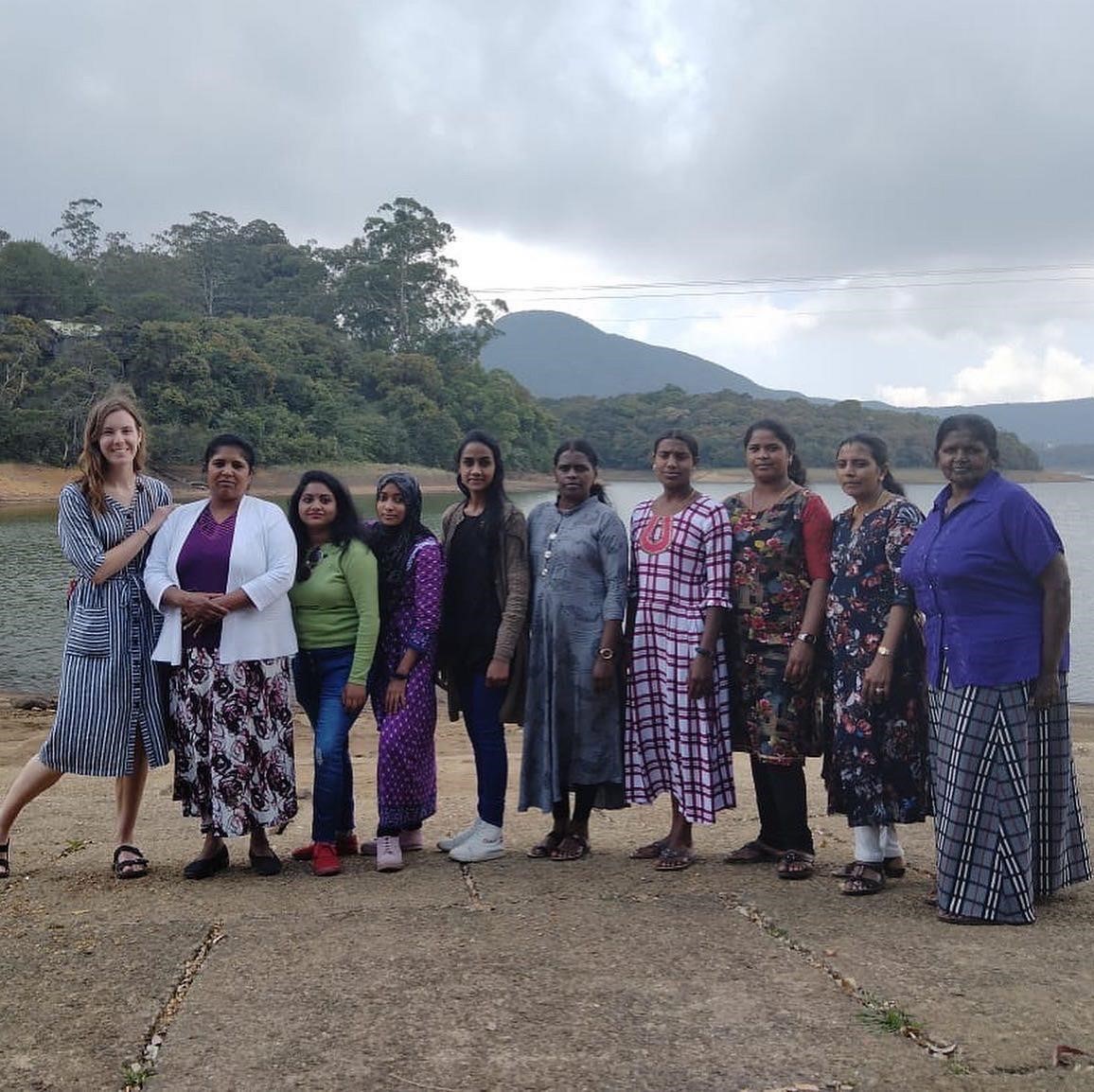
AMMA Natural Textile is a social enterprise I founded in 2016. AMMA means Mother in Tamil and Sinhalese the two languages spoken in Sri Lanka. The enterprise was started to provide sustainable and flexible employment to mothers so that that they don’t need to migrate abroad to find work to support their families.
AMMA aims to be a model for a kind of rural livelihood that empowers women and protect Mother Earth. The process and product are aligned to the regional ecosystem using natural dyes that are driven from food waste and native plants. It also aims to keep alive and champion traditional making methods like hand weaving and embroidery.
I visited AMMA after two year with the purpose of reconnecting, understanding the problems and co-designing solutions with the team.
The global pandemic left deep social and economic impacts leading to uprisings and political unrest in Sri Lanka particularly in recent months. The local resilience is crucial more than any other time during this turbulent time.
Over series of workshops and conversations with the team, the need for AMMA community garden emerged. We found playful ways to start conversations about the garden, how it could contribute to the wellbeing of the team and improve the environment and biodiversity around the workshop. We shared the individual skills and experience we have as a team, elected a manager, discuss the additional resources and revenue and sustainability of the enterprise.
Over the last year I have been dreaming, planning and putting my focus into the creation of a start -up company named Symbiosis Soil Lab.
Symbiosis Soil Lab is a regenerative enterprise, specializing in soil microbial analysis and a mobile laboratory educational service. It is based in both the UK and Portugal. The journey so far has involved a range of multidisciplinary stakeholders necessary to initiate this dream and turn it into a reality. The module four work placement provided an interesting setting for me to explore the challenges and dynamics of working in collaboration with teams of diverse backgrounds, vocations and also cultivate a variety of relationships using both in-person experience and online platforms.
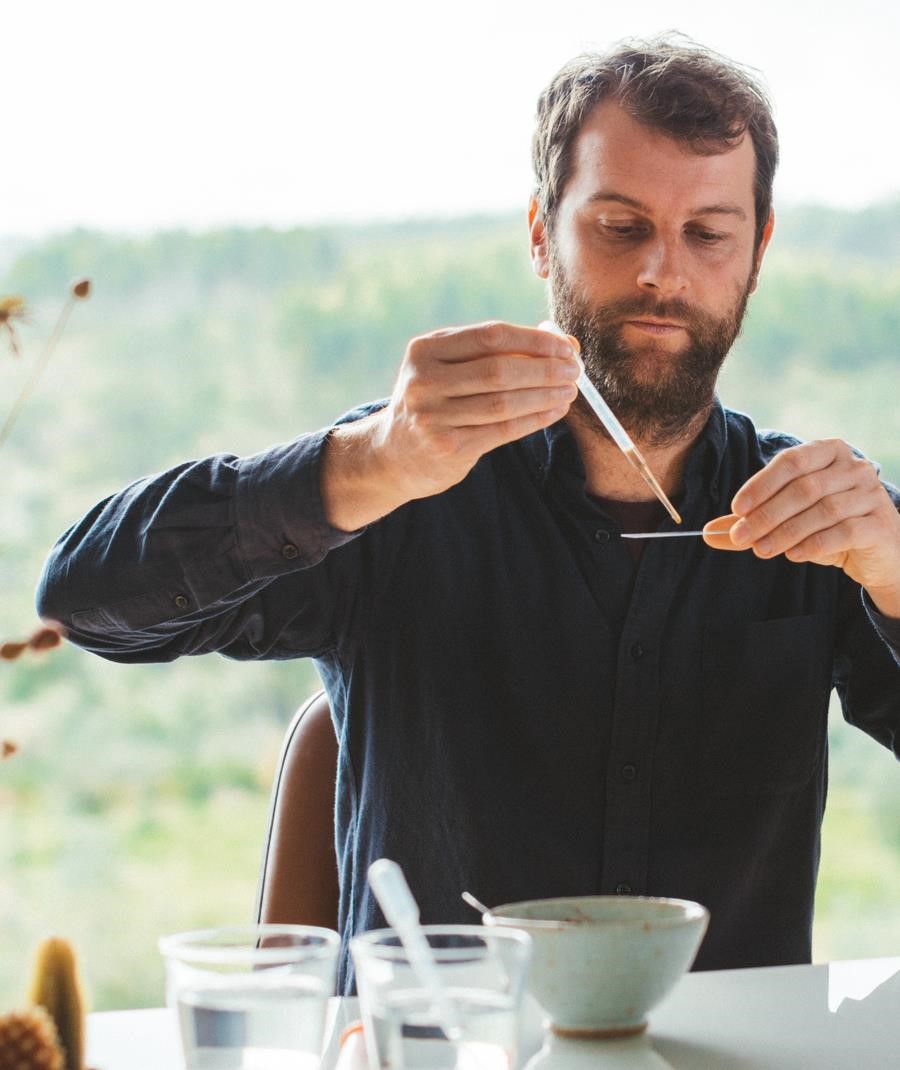
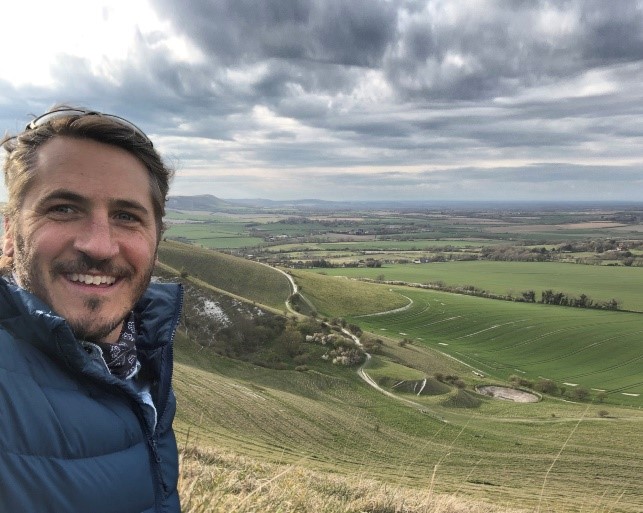
Land story is a land design agency based in Frome, Somerset. The business draws upon collaborators and partners within the UK and internationally to deliver projects of broad scale and scope working with landowners, rural estates, social enterprises, local authorities, and private clients. As founder Simon Brown describes, the business was ‘born out of a vision to inspire and create a new and ancient story for our land and our people’.
This placement revealed a multitude of insights from theoretical to practical, from pragmatic to ethereal, from subtle to profound. In light of my own graphic design business practice, I found a lot of common ground with the way in which Simon manages his Landstory business model. As I got to know more about regenerative practice, I noticed aspects of the living systems principles and frameworks permeating into the very structure and approach of the business.
Siendo Naturaleza (Being Nature) is an “Amazon Life Project for Life”. It is located in the cloud forests of the Tiracu Valley near the city of Tarapoto. It is based on 13.5 hectares of deforested and degraded land situated at the edge of Cordillera Escalera, Peru’s first Regional Area of Conservation and a watershed to the Amazon River. The director, Eliane Cohen and many of the core team are alumni of Schumacher College. Every year Siendo Naturaleza welcomes students from Ecological Design Thinking who want to experience land regeneration, community building, Zero waste life, or ecological education in an Amazonian context.
Samantha’s Placemaking project
Placemaking, I realized, is simply a means of conveying values in a means that goes beyond language. If a space is designed in such a way that captures essential values, then those values will be able to permeate outwards to all those that use the space.
Elsa’s Siendo Naturaleza’s (SN) Film Project
I think this film communicates my experience of this place and this project more deeply than my words ever could. It feels true to my ecosophy, and my sense of urgency, but also is my best attempt at meeting the needs and objectives of the Siendo Naturaleza team. I am immensely grateful for this time, and to have shared it with such brilliant humans. While it has been so challenging in every way, it has shaped the way I walk around the next corner and into the future, and for that, I wouldn’t change a thing.

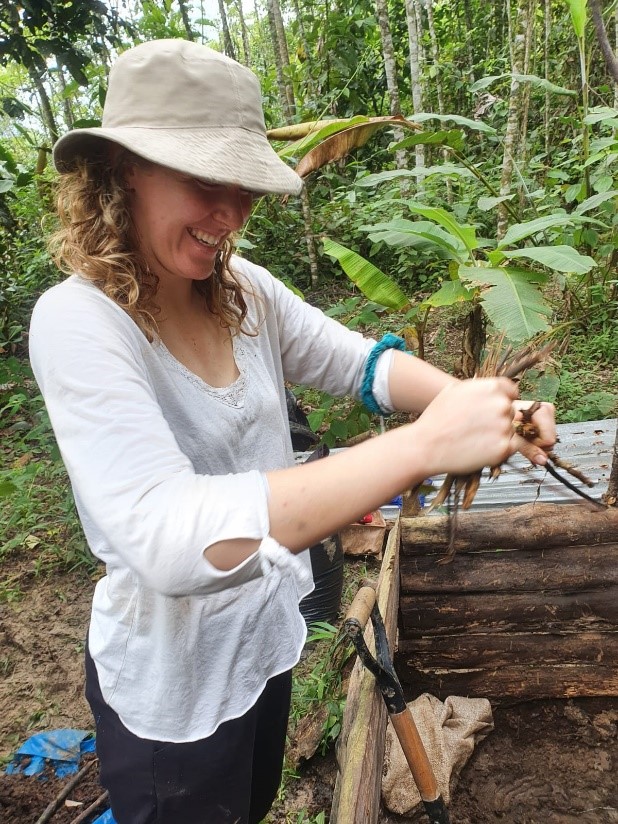
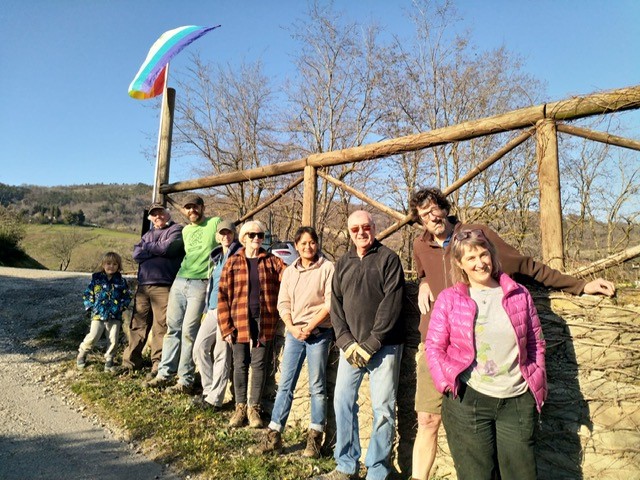
Borgo Basino is a living, learning community connecting education, networking and wellness on a small multifunctional farm in the Romanga region of Italy. It is a hub for agricultural experimentation, community wellness, and sustainable hospitality. It is a place to Learn together as a folk school, Live together as an ecovillage, and Grow together as an organic farm and bed & breakfast.
Evan Welkin, an Ecological Design Thinking alumnus and the co-founder of Borgo Basino welcomes EDT students to join and collaborate on ongoing projects on the path to becoming a regenerative community.
By being really present to the beauty of the people and place, participating fully and taking time to self-reflect made the experience much more enriching – like tending the soil for myself and others. I am beginning to embody Borgo Basino’s ethos of regenerative living by building my capacity to restore and renew my own source of energy which will provide a resilient foundation for my future design practice.
imagination thinking is well known in Schumacher circles, alternative green podcasts and climate movements but it is not yet visible in mainstream discourse. The Cambridge Festival is a fairly mainstream event, a combination of the Festival of Ideas and the Science Festival, articulating aspects of world-leading research from Cambridge University. As part of its community outreach programme other organisations are invited to run their own events and hundreds take place over 2 weeks.
The seed of the Cambridge Imaginarium was planted by Nicole Barton, the events co-ordinator at Cambridge Carbon Footprint after she attended a talk organised by Rob Hopkins on ‘Why we need a revolution of the imagination’. At our last teaching session at Schumacher we had a group session with the main Imagination man himself and Rob led us through various imagination exercises and conversations in an impactful and heart-warming session.
Through a fruitful and inspiring collaboration between Nicole and Hillary Cox, a local community artist and additionally myself, the Cambridge Imaginarium came to life. Children and adults were invited to create art and engage their senses to imagine a better, fairer, more nature based Cambridgeshire. All who worked on the project felt energised and empowered by practically helping with something tangible, as opposed to endlessly contributing to zoom meetings. This positive, collaborative connection between volunteers from the Cambridge Resilience Web was an unexpected outcome and something to factor into any future events.
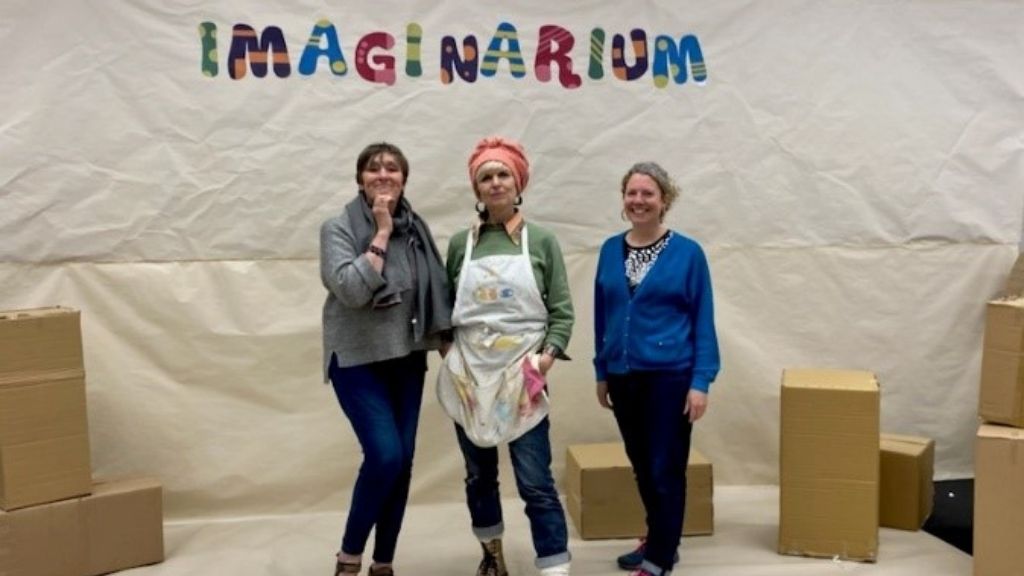
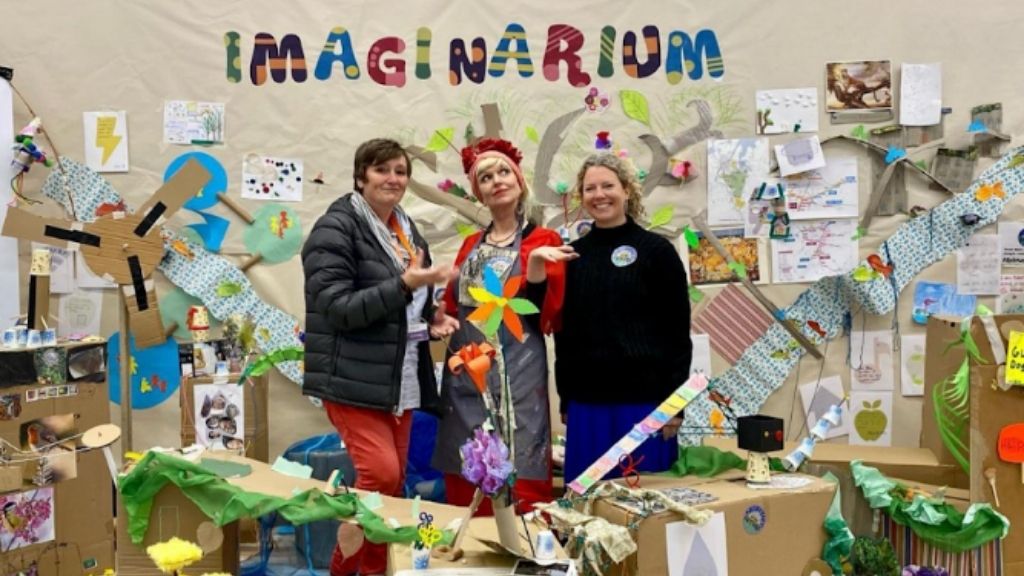
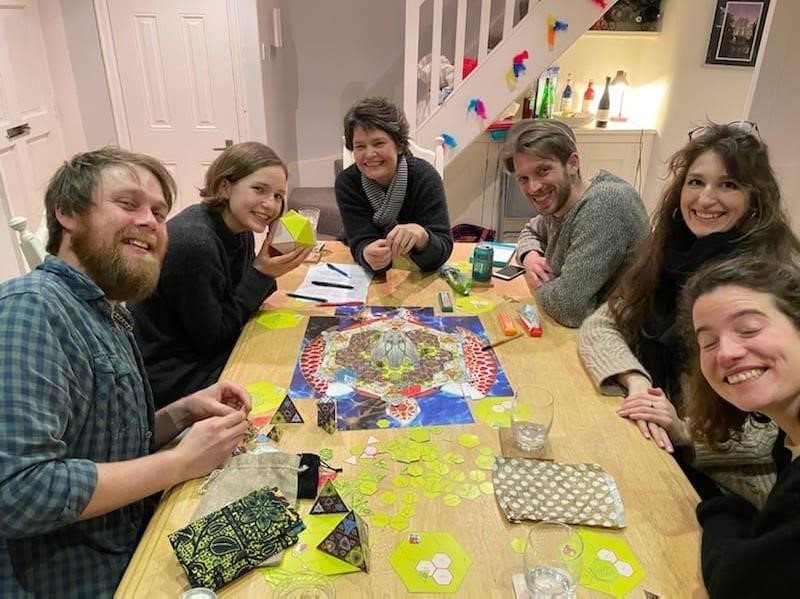
I developed a board game named Interwoven based on Doughnut Economics. It is a subtle invitation to deep storytelling and reflection. It creates a playful space where the real world and the game settings blend together and open ground for imagination.
The purpose of this work is to create an interactive learning experience which can create a space for dialogue about difficult subjects. It can help people to generate relevant insights which can change the way they view the world, and how they behave in accordance with the need for radical systemic change. This is an ambitious goal but it comes from an understanding of planetary needs and is grounded in frameworks such as iceberg model, three horizons, biomimicry, etc.
The Net Zero Programme is a free, six month growth program for climate tech scale ups. The main elements of the programme are workshops focused on founders and delivered by entrepreneurs who have lived the journey. Specialised streams on raising funds, sales, talent, managing the board and international expansion. The programme also focuses on connecting with investors, enterprises and policy makers.
Sustainability sessions invite world-leading thinkers to help the scale ups quantify their companies impact and potential.
The main ecological design methodology used for the workshop was the Three Horizons Model. Three horizons is a great design tool to help start a conversation about the future in a fun and easeful way that anyone can pick up. The simple framework allow is perspectives about the future to exist in the present. Using Three Horizons allowed us to look at the current mindset and design of the programme, review, evaluate and re-imagine a potential future of Net Zero 3.0.
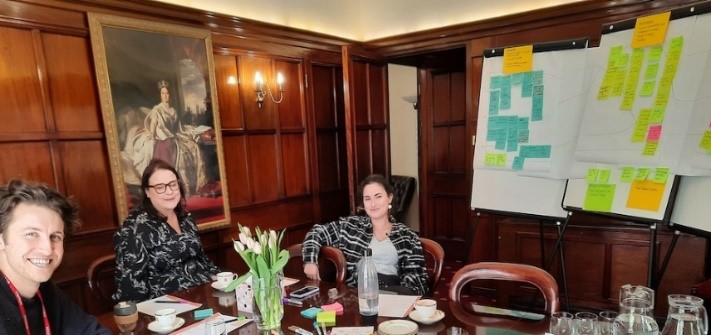
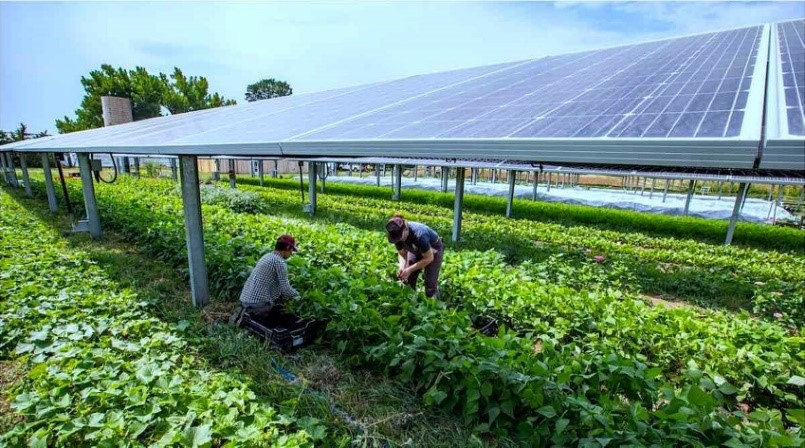
‘LDA Design are an independent, 100% employee-owned consultancy of urban designers, landscape architects and planners working together to connect people and place through landscape. For 40 years, LDA Design has held true to a single mission: to create great places and shape the world around us for the better. The original meaning of the word landscape is to create a place where people belong. For LDA, landscape is an active ingredient, a unifier, a healer. It is where memories are made and life is enjoyed.
LDA are working with a major energy company on the design of multiple 400-900 hectare solar Farms and considering the best ways in which to do this from an ecological perspective. I was asked to:
- Research Agrivoltaics as a simultaneous approach to food and energy production,
- Created three briefing notes, consider what insights ecological design thinking could offer,
- Present the agrivoltaics briefing note to project team and facilitated group discussion,
- Created and delivered a CPD workshop: Introduction to Ecological Design Thinking.
The placement helped ground my understanding of my role as an ecological design thinker and where I can offer value in a professional environment. I connected with the idea that I had the ability to build social and ecological resilience within LDA and through the work they do.
I enjoyed this ability to use ecological design thinking practices to facilitate deeper discussion. I will hold onto the words of advice given by my tutor who assured me that ecological design thinking means to act as a bridge and think in relation, not in isolation.
Schumacher College, set up in 1991, is a progressive ecological, education provider, with a global alumni community, which includes present and former students, volunteers, staff and guest lecturers. A community can be defined as a group of people with a shared interest and common experience, here being an experience and understanding of Schumacher College’s teachings, which also include staff and students at Dartington Arts School.
To build an organisation slowly, from the ground up, emphasising reciprocity and self -organisation, to ensure a culture of trust, is radically different from the norms of Western, neoliberal society. However, this is fitting for a Schumacher alumni community, which should model the change it wishes to see in the world.
Working together means Schumacher alumni can go further when dealing with the existential problems of the world, but also, being together means we can inspire each other, dream bigger, and broaden the horizon of the possible.
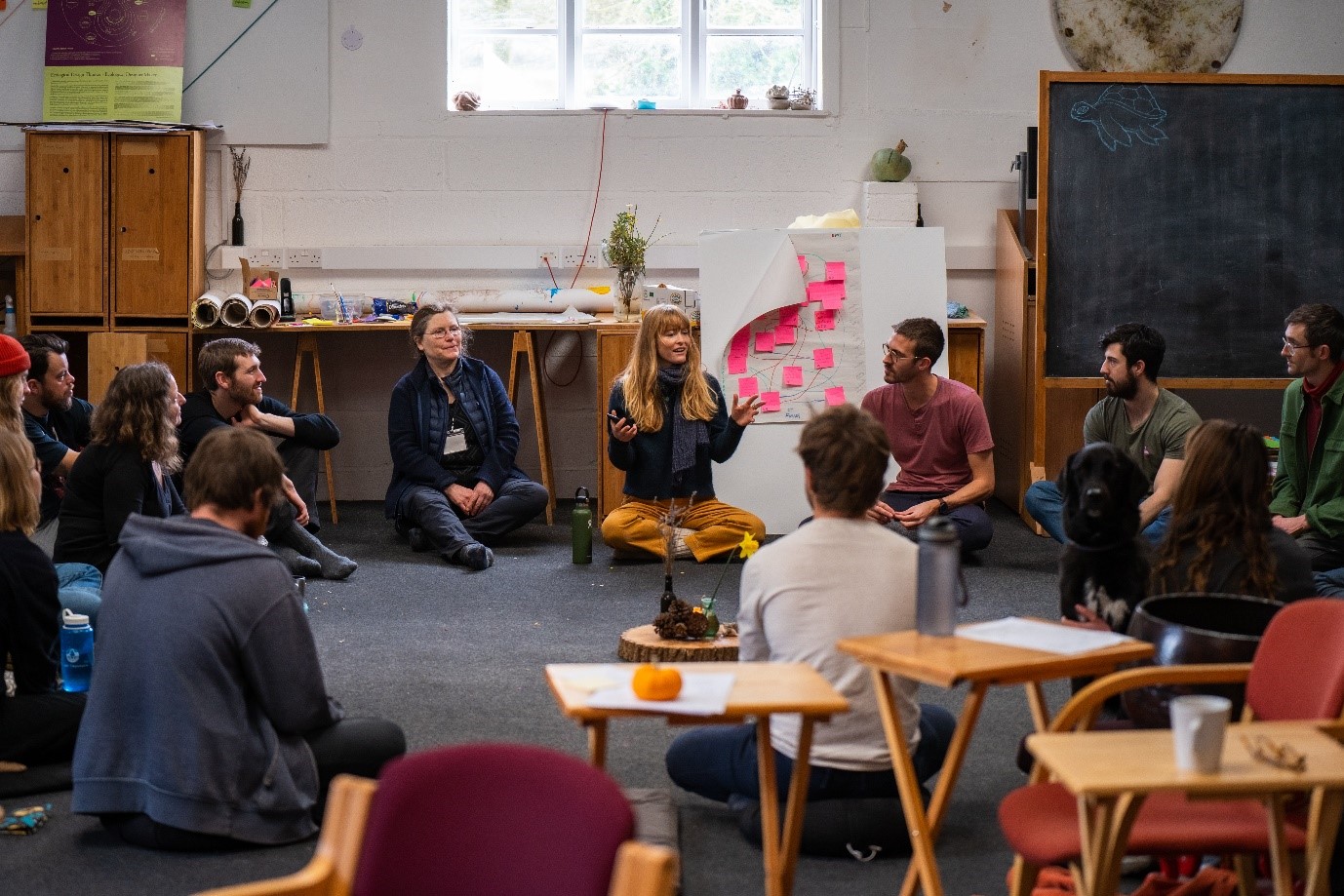
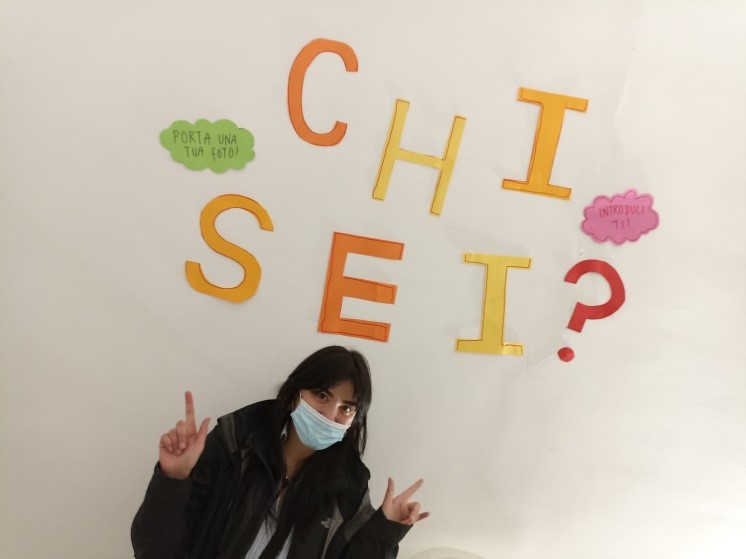
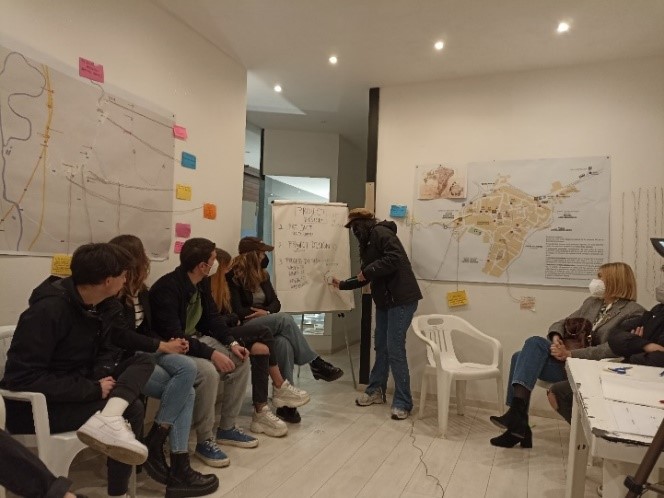
“Percorsi Sabini” (Sabina’s Paths) is a community building project in the Sabina Region of Italy. It aims to engage the young people of Magliano Sabina in community development and regeneration of their town. With the support of local organizations, this project has received financial support and a physical space to be used as a venue for participatory practices and collaborative activities. Sabina Santovetti, an alumnus of the Ecological Design Thinking programme, is the project leader and currently in charge of the program.
At this stage, the project includes series of training activities and workshops. These embody theories and tools the participants can use as the foundation to become an active change-maker in their own community and beyond. The young participants in this project have gathered beforehand and founded a start-up called “GLab”. GLab is a space to promote art, traditional culture, local produce and activities within a sustainable and ecological frame. The longer vision for Magliano Sabina is to become a Transition Town.
I have thoroughly enjoyed working on this project and learning more about (and from) the local youth of Magliano Sabina. I entered this experience with an open mind, knowing I would find some interesting answers to a few personal questions I’d formulated with regards to community In my opinion, GLab has a good chance of becoming a well-established community centre and Transition Shop when the participants focus on learning by doing, reflecting on their own mindsets and executing local projects while inspiring possible other innovators who are willing to contribute and engage.
1)If the council of any borough, urban district, or parish are of opinion that there is a demand for allotments . . . F2 in the borough, urban district, or parish, . . . F2 the council shall provide a sufficient number of allotments, and shall let such allotments to persons . . . F2 resident in the borough, district, or parish, and desiring to take the same.
I discovered the right to an allotment through conversation at the Schumacher College dinner table. Beyond the reality of bureaucracy and the loophole of endless waiting council waiting lists, the law offered an enticing provocation speaking to the question of access to land, particularly in an urban context with extremes of inequality. The space we do, or do not have access to I believe is a fundamental part of entrenching the systems of marginilisation that exist within our society. ‘We need space’ was something I heard throughout this project, from both the young people who use 1625’s services and their support workers.
The underpinning theme throughout the project was the challenge of building relationships. I became interested in the viewing the process as a ‘pre-emergence’- creating the conditions in which something new could emerge and grow. This is the work of building the soil, literally and metaphorically. This is slow and sometimes challenging work but allows for a wider view of the scope and purpose of what I/ we were doing. The events and moments of gathering or ‘celebration’ could be viewed as simply the fruiting bodies of the larger organism of mycellium. The threads of connection, the ‘songlines’ which run beneath the surface and might serve to weave a web of community and story around the shared space of the allotment. There are ‘songlines’ which reach further forward and those which are shorter. I found that mapping these ‘songlines’ or lines of process as a web allowed me to better visualise the complex and non-direct nature of the project. If delicate activism is being an ‘artist of the invisible’, then perhaps this project was also being an ‘artist of the sub-visible’.
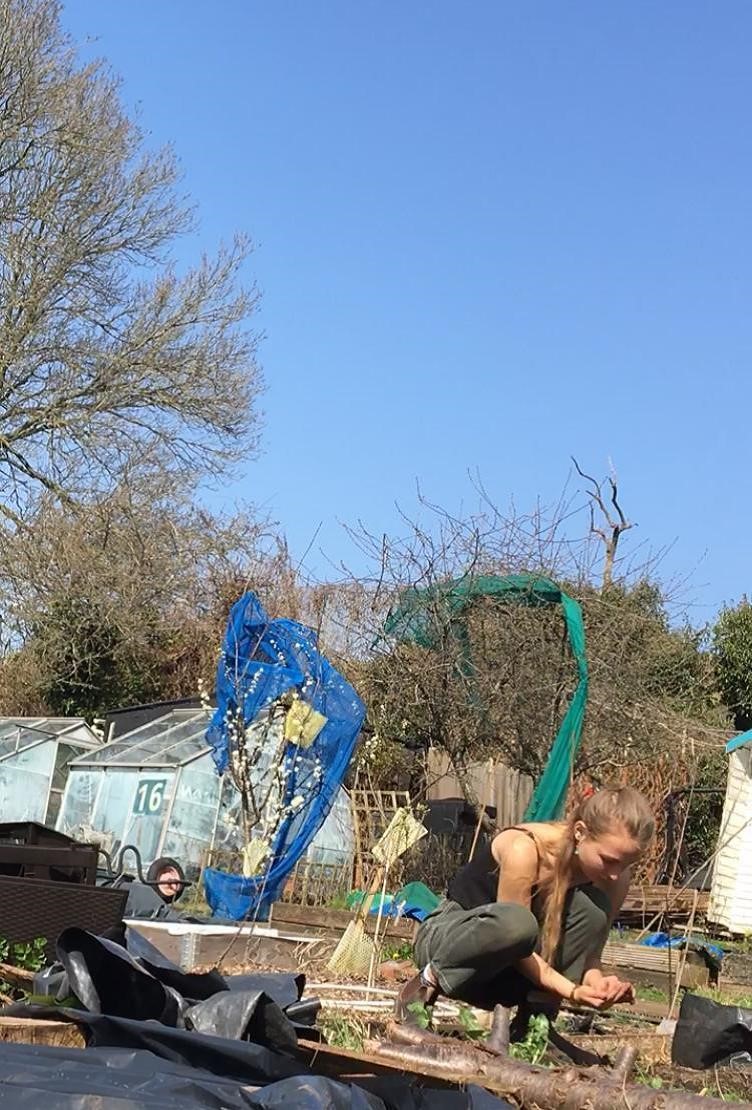
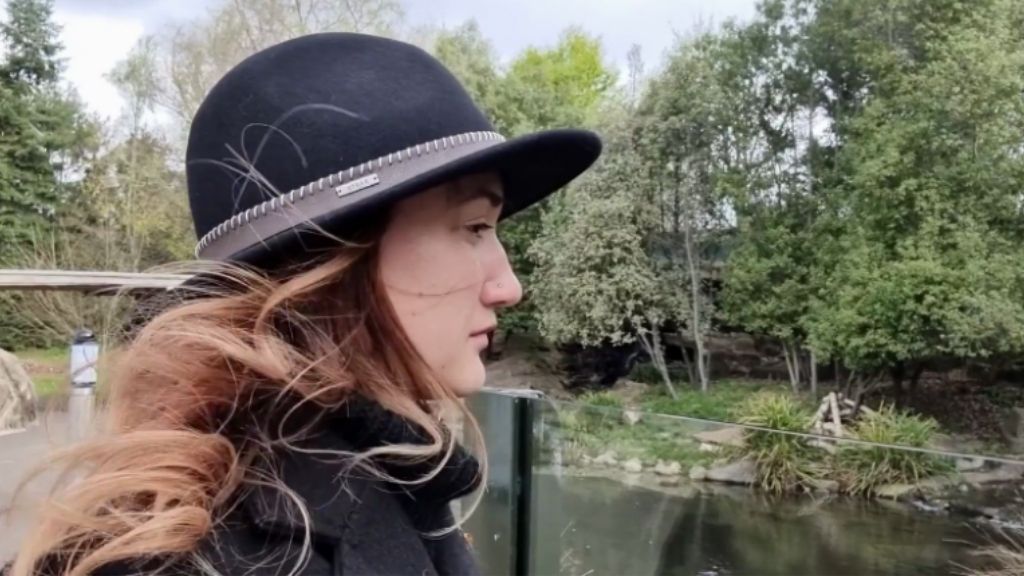
Y’ael Vorster Rewilding; Reality, Myth, Dream (An Academic inquiry)
Searching for the meaning of rewilding, I have discovered a multitude of impressions, images, dreams, scientific analyses, artistic interpretations, approaches, principles, techniques, critiques and case studies.
Given the plethora of different interpretations, much like design thinking – or dancing – rewilding is not just one thing. It appears to be a set of mind-sets, enquiries, processes, tools, techniques, and approaches for creating a wilder world, guided by empathy for those who must inhabit it – both human and other-than-human. It is a cluster of phenomena and effects. Beneath that, something unknown.
Following a process-oriented ecology approach (Mindell, 2013), to understand and facilitate this intelligent process of rewilding for individuals and large groups (Mindell, 2014a) I studied and explored its manifestation on three levels:
- Reality – Rewilding in Consensus Reality
- Myth – Rewilding in Dreamland
- Dream – Essence of Rewilding
My conclusion is that ‘rewilding’ is unownable and the essence of what it is defies distillation into a neat framework. It has a collective meaning and a deeply personal one. Rewilding signifies new energy for activism and nature advocacy, and a new political will to create change on a large scale. It is a new vision of what conservation can achieve – a wilder future, where nature does not need to be sacrificed to economy. Indeed, new forms of economic activity will now emerge.
Rewilding is, at its purest, about hope.
